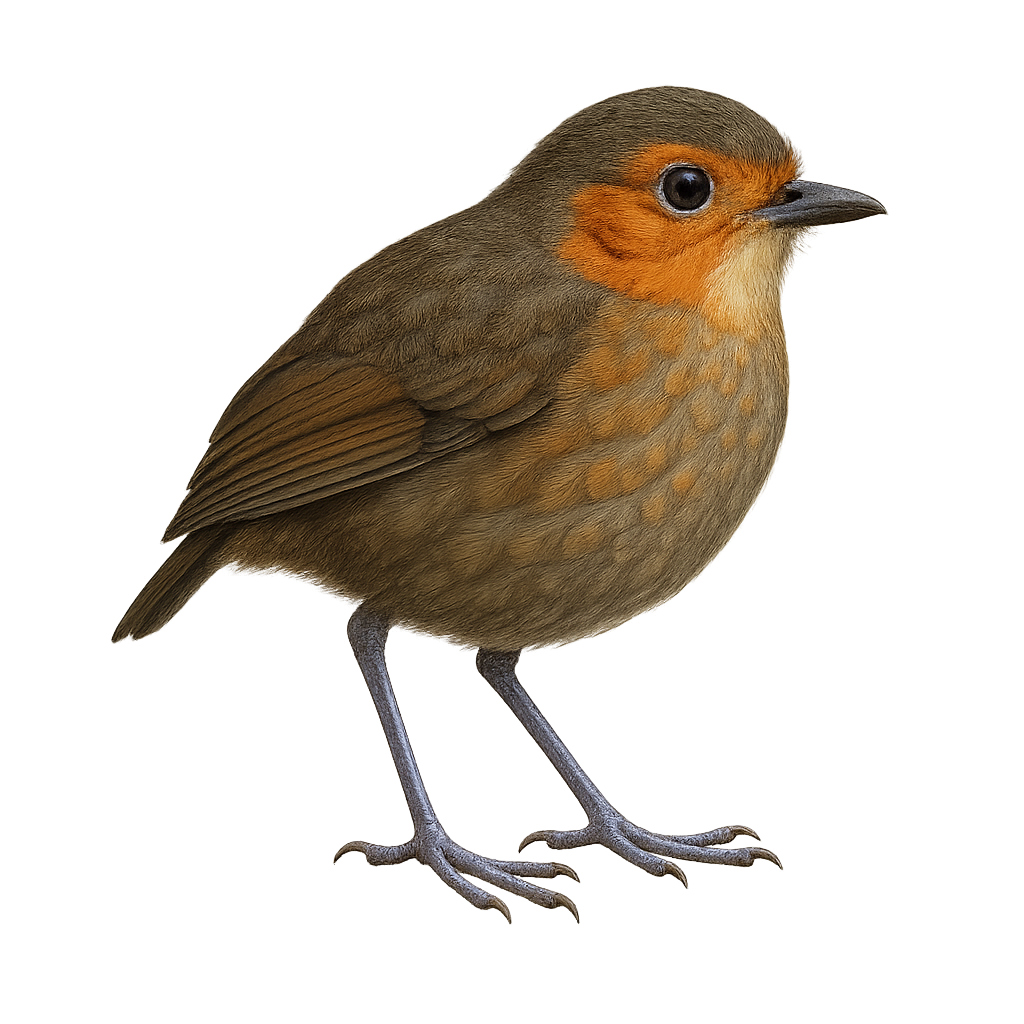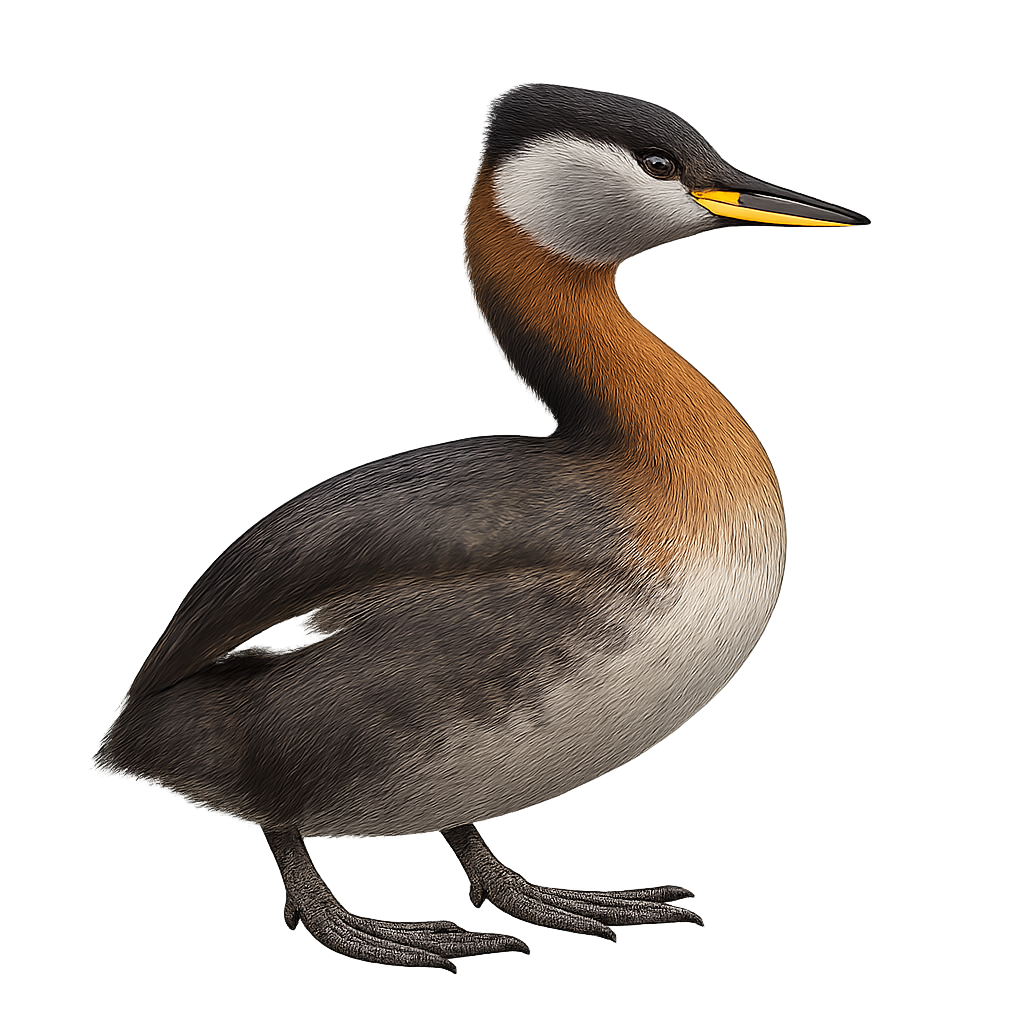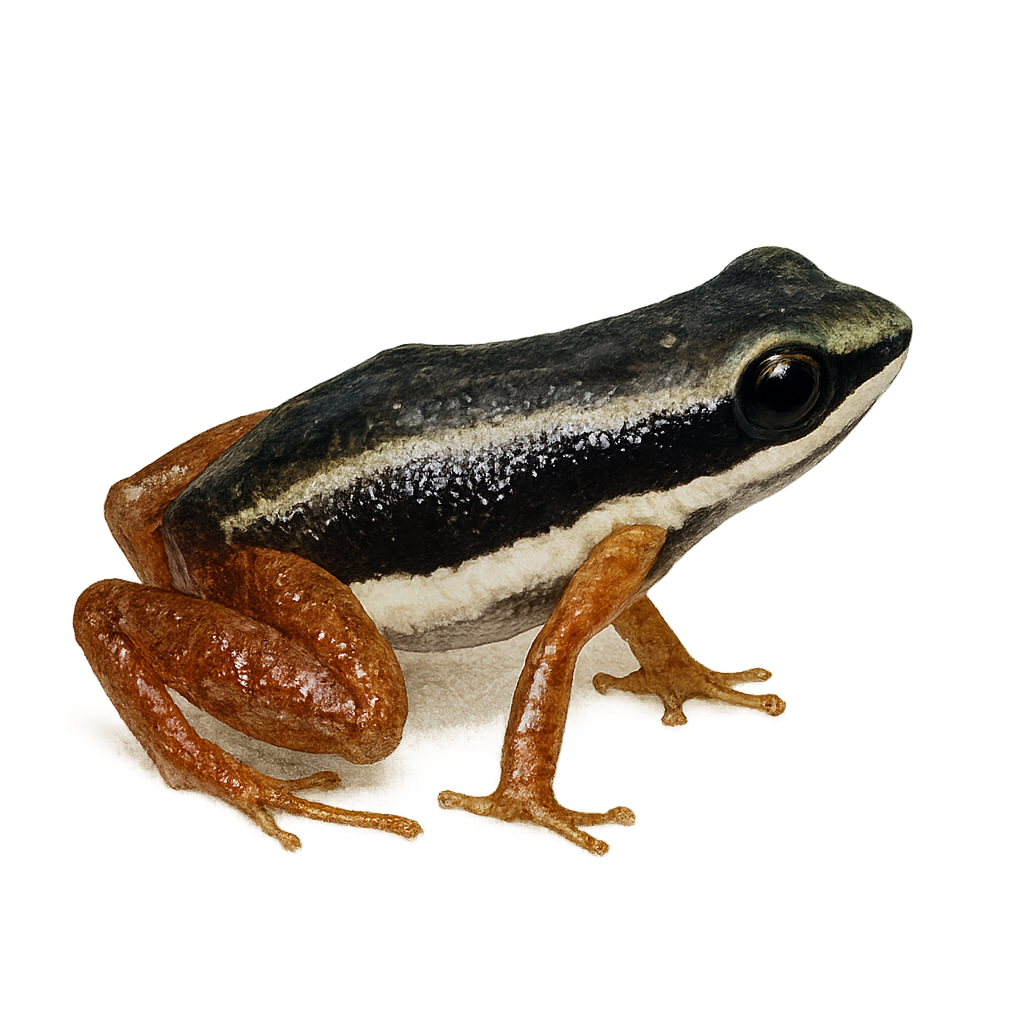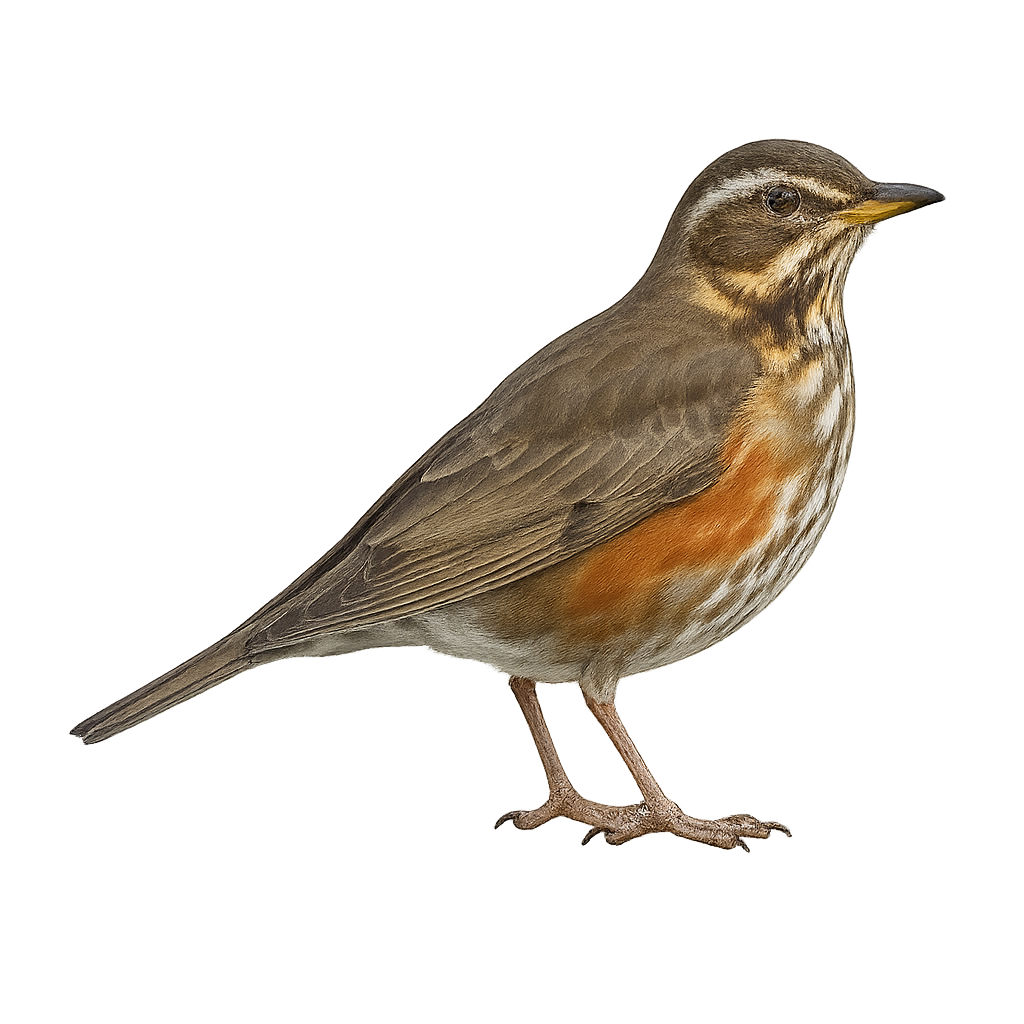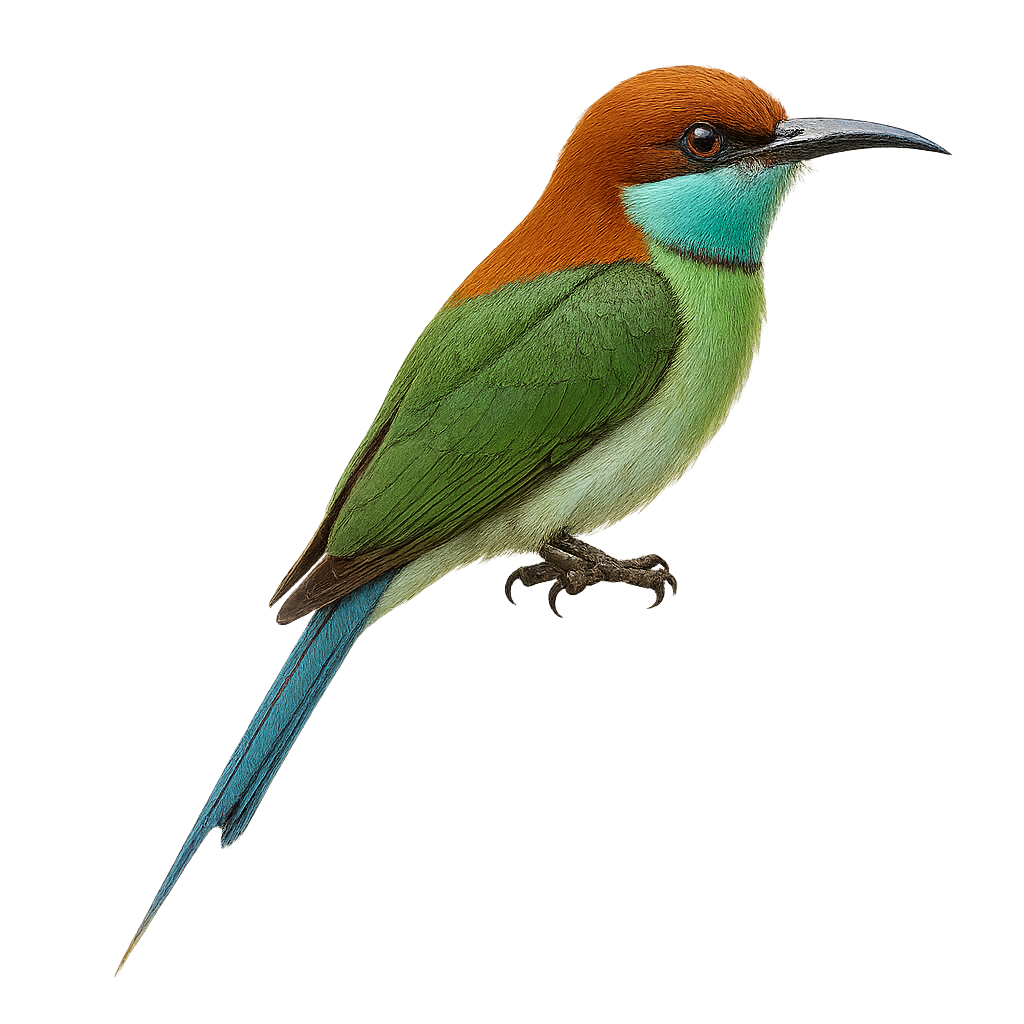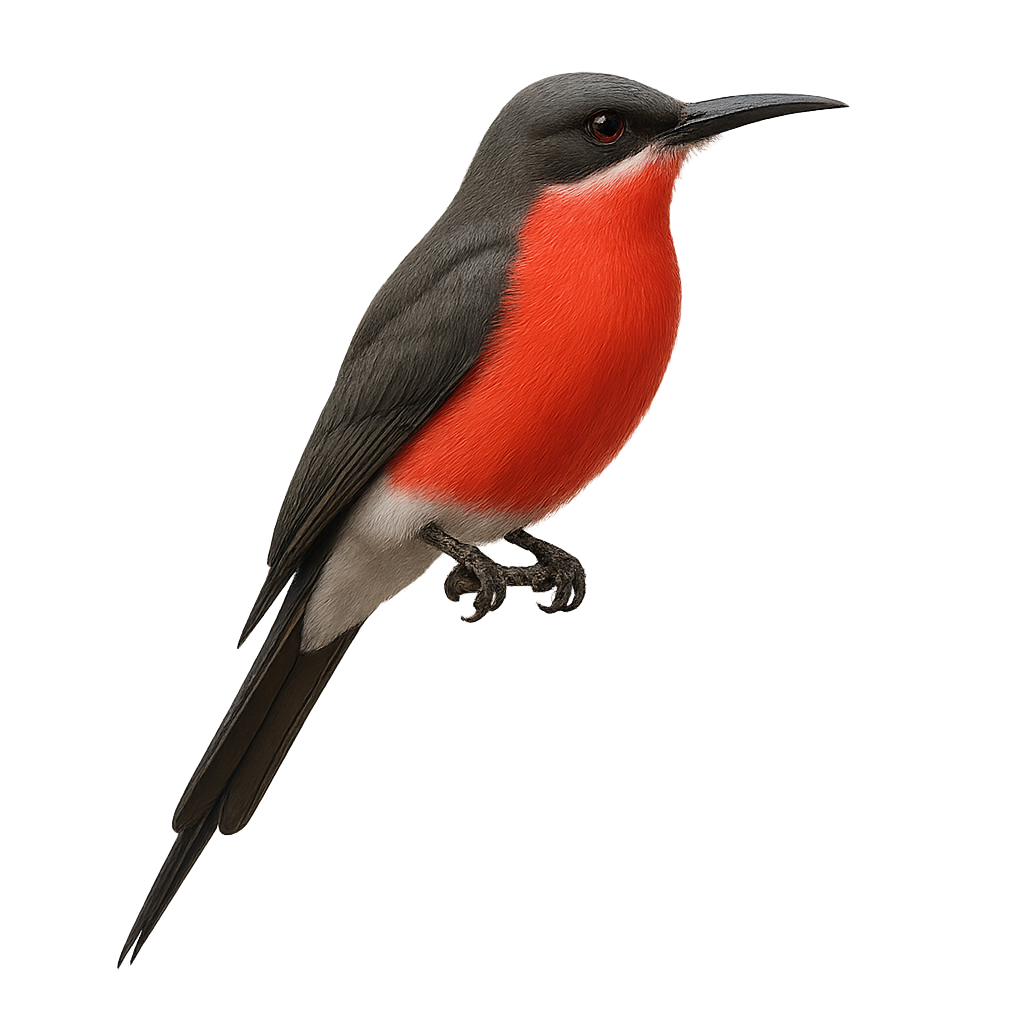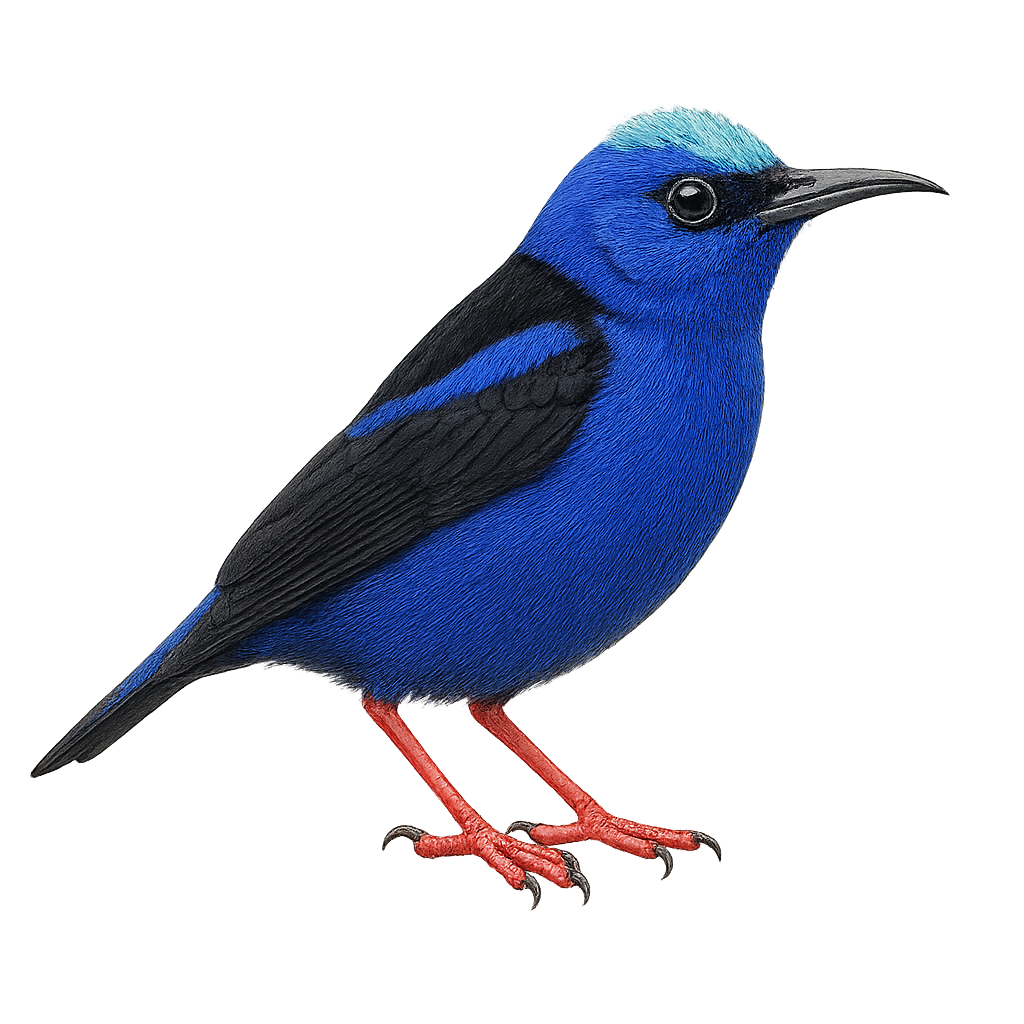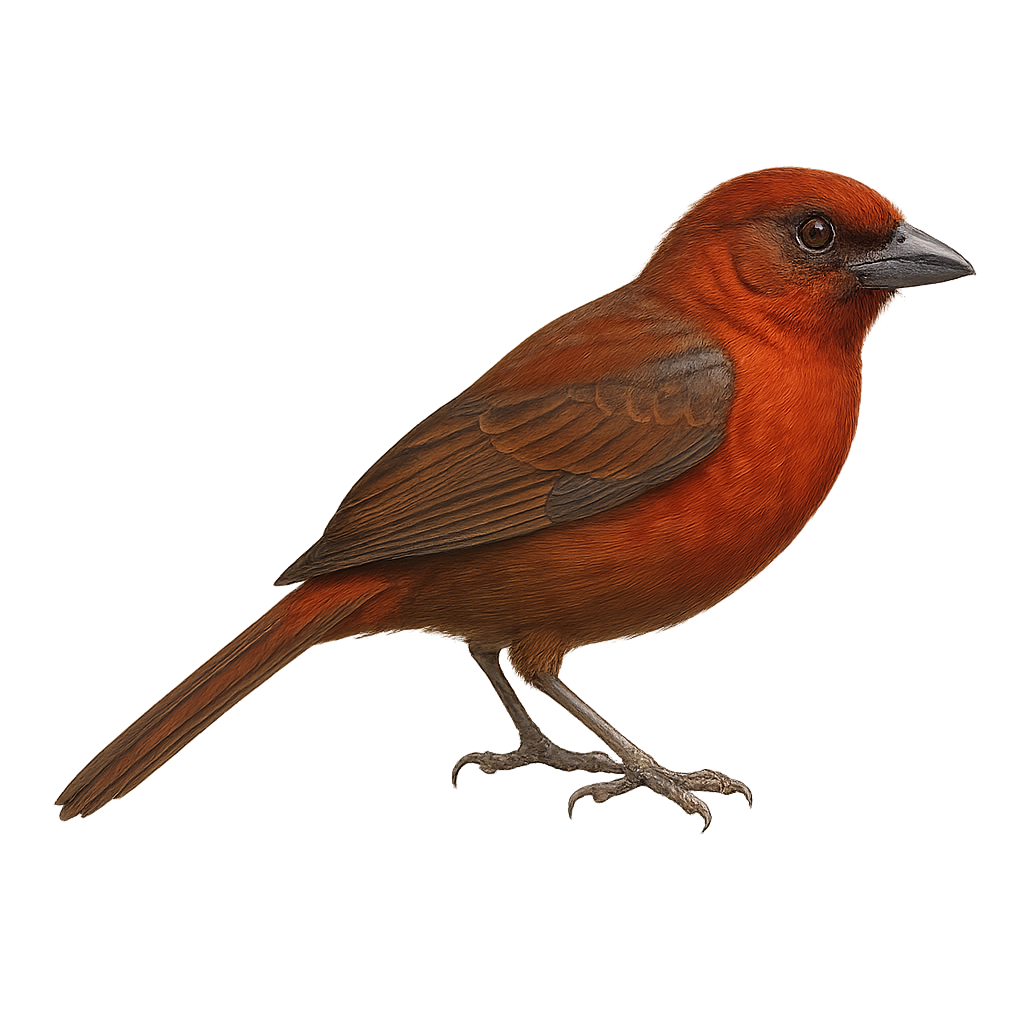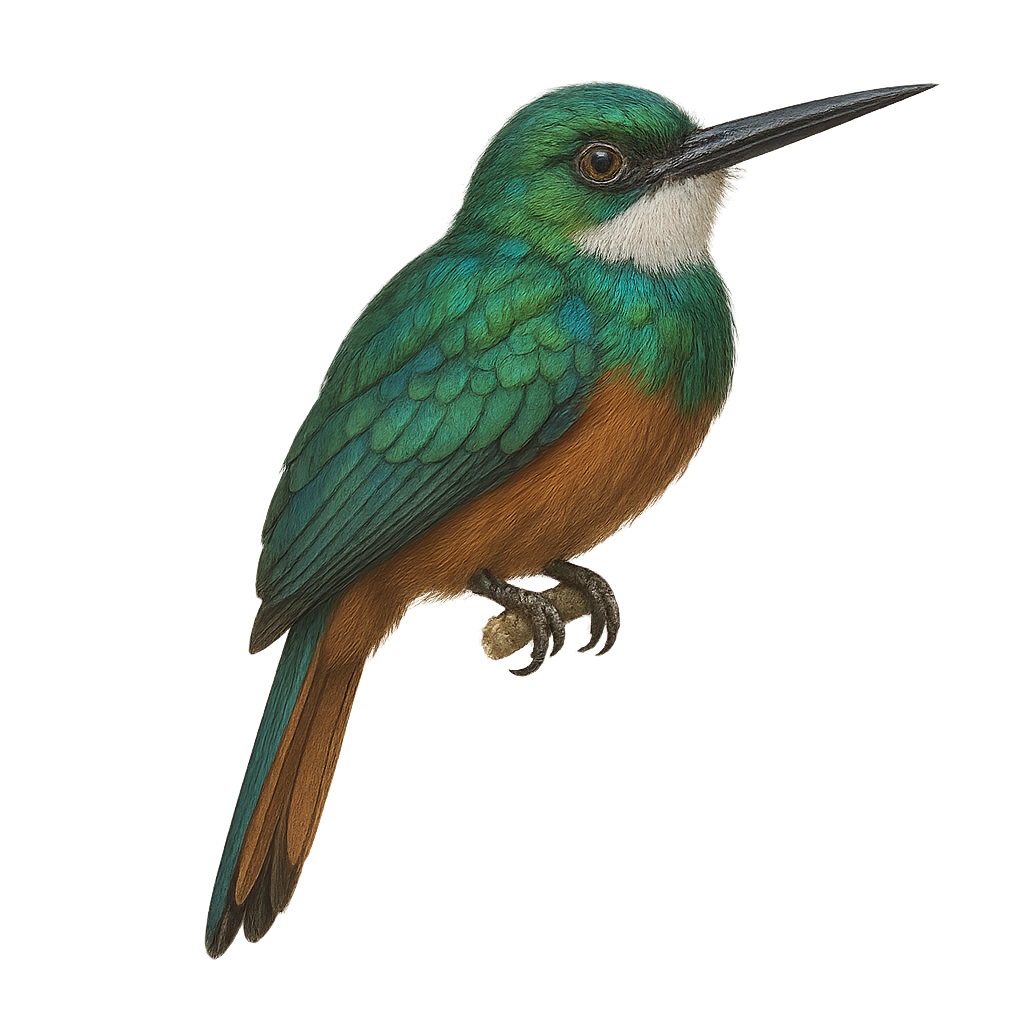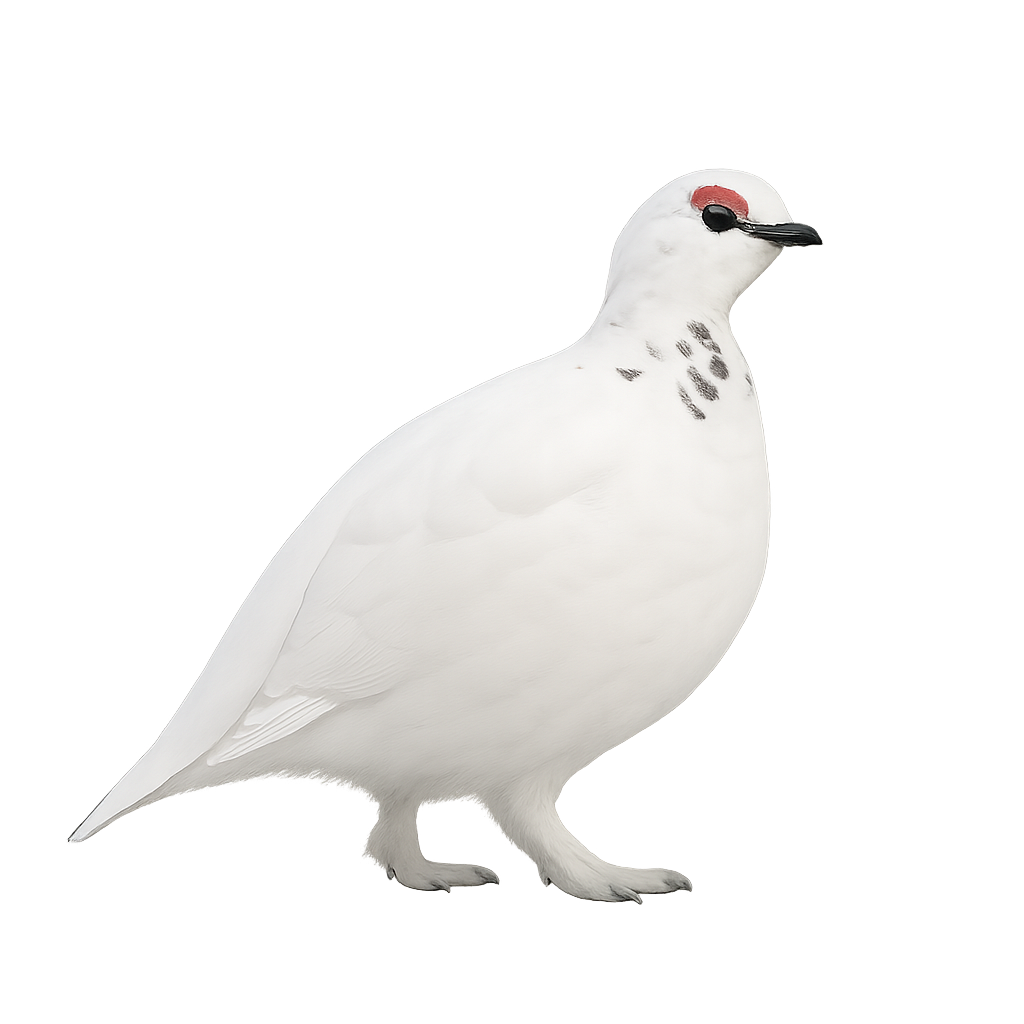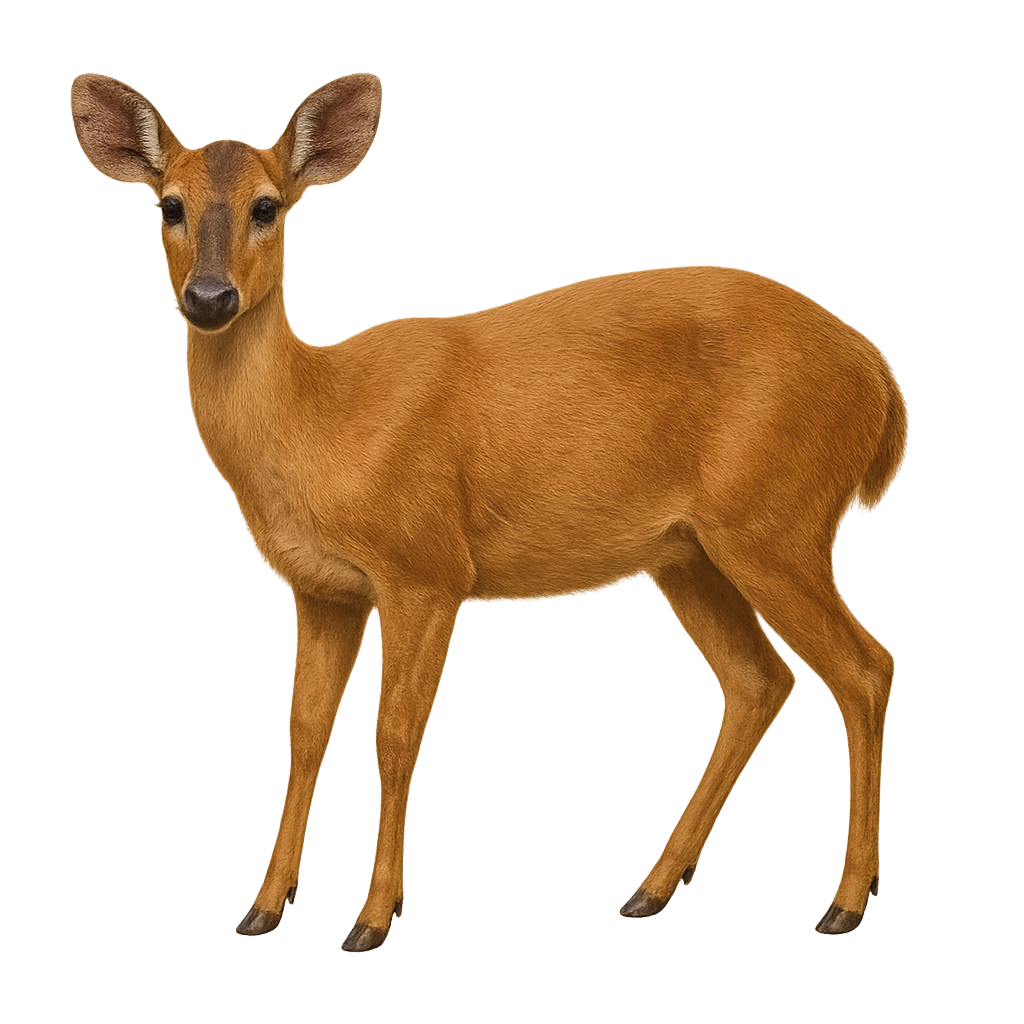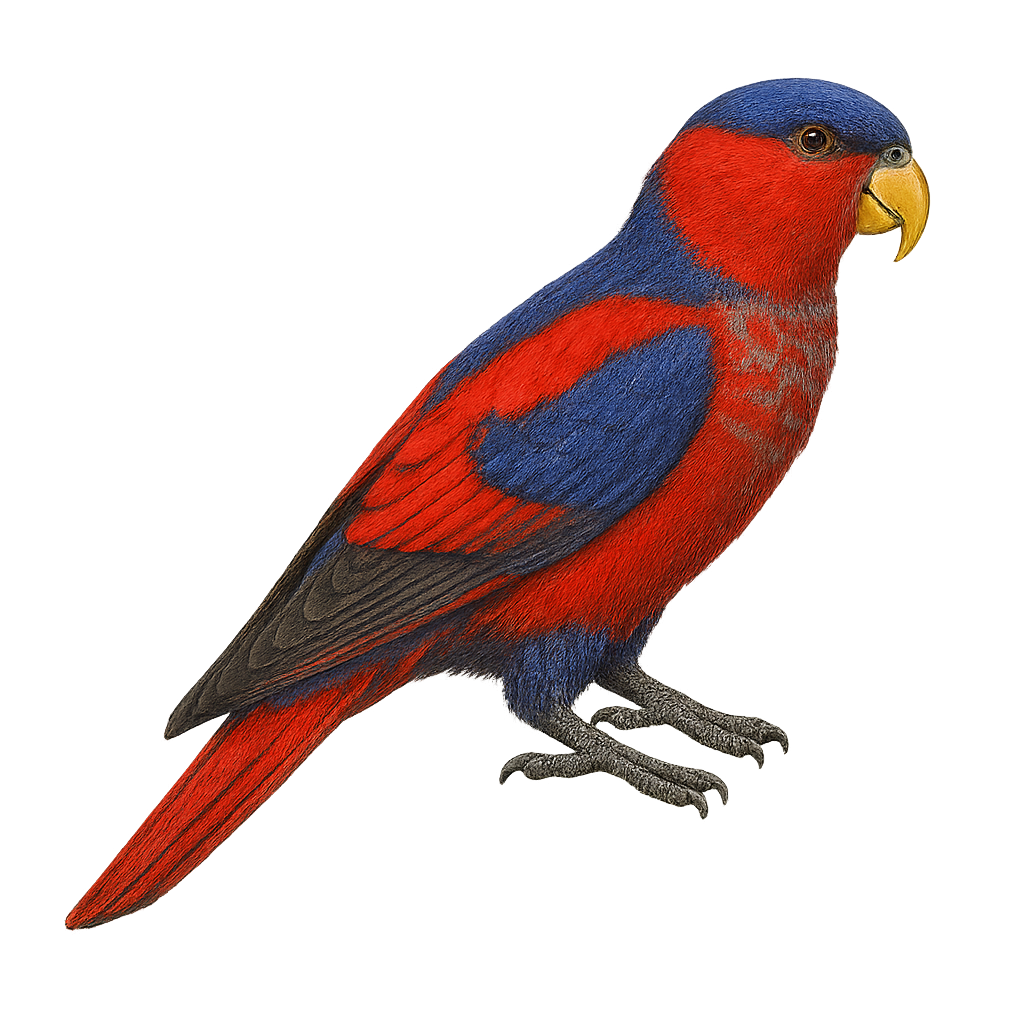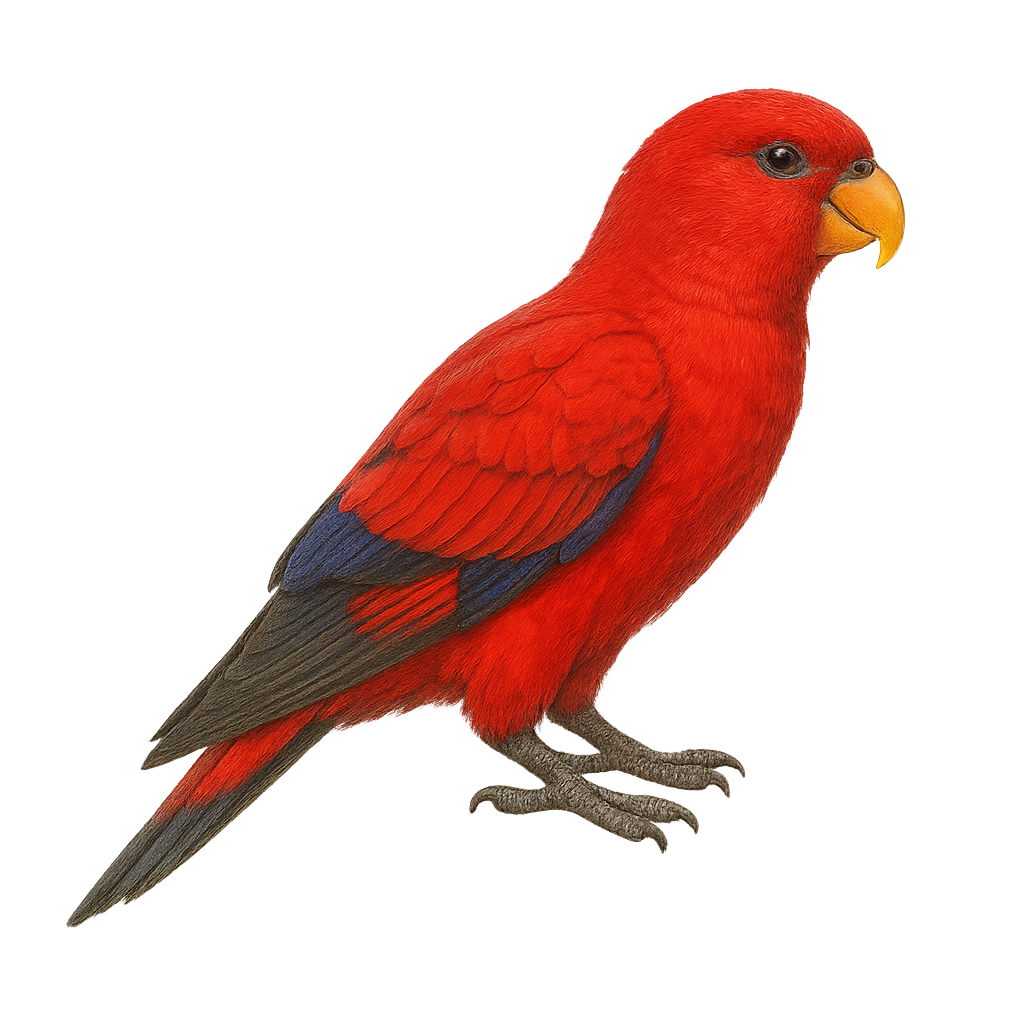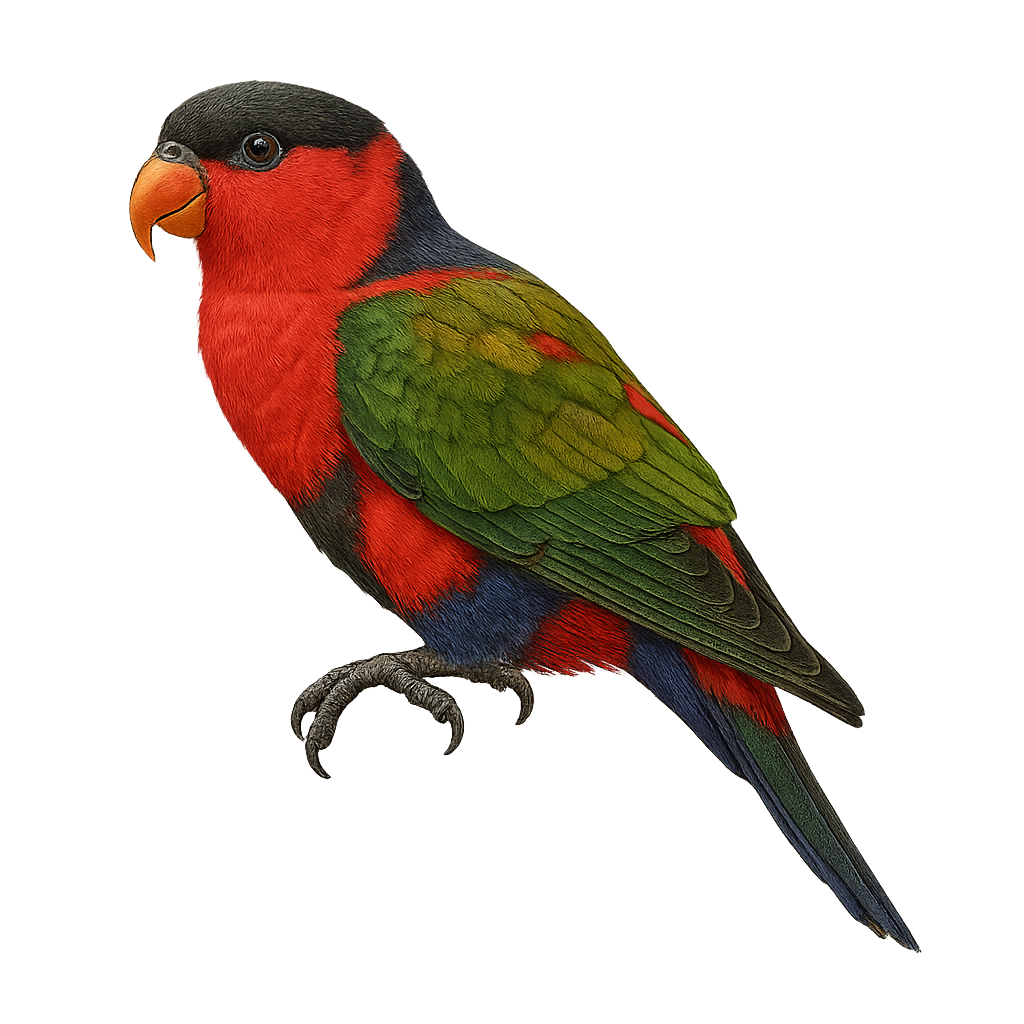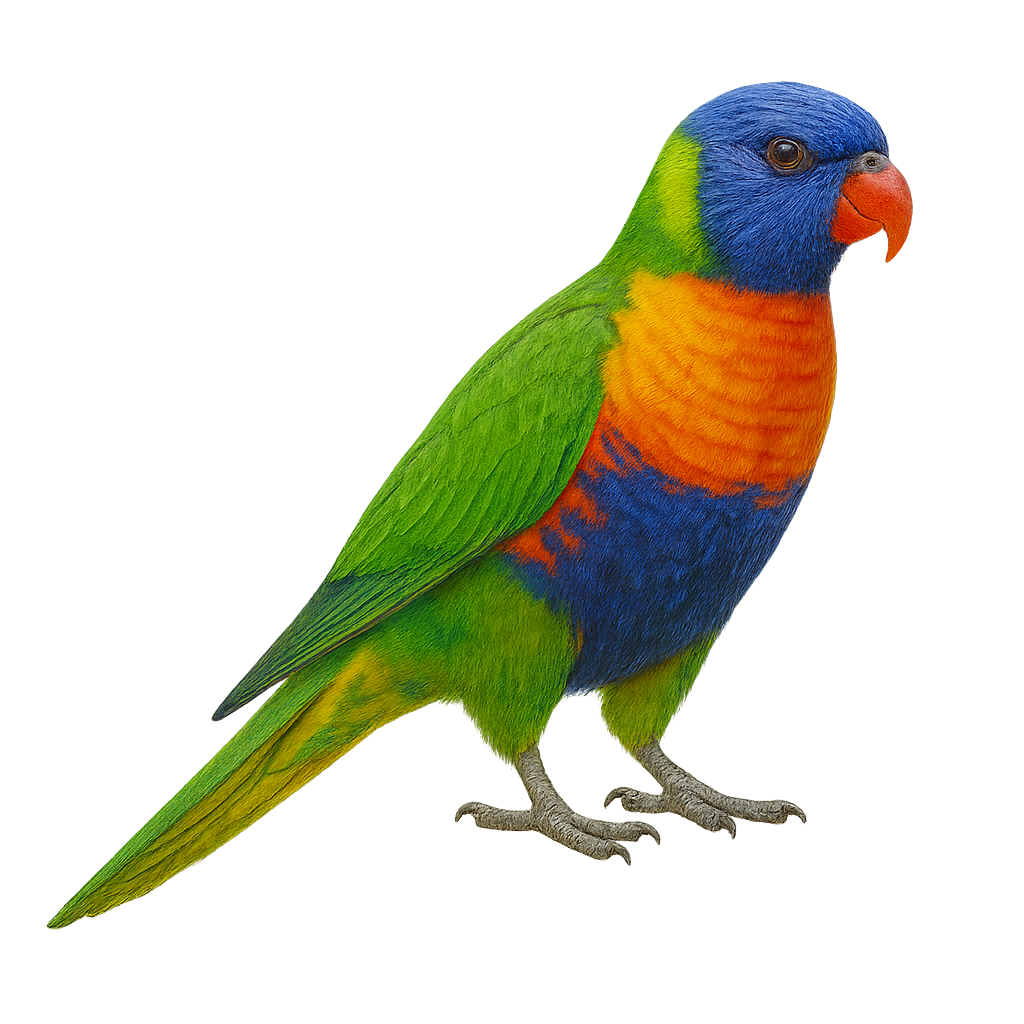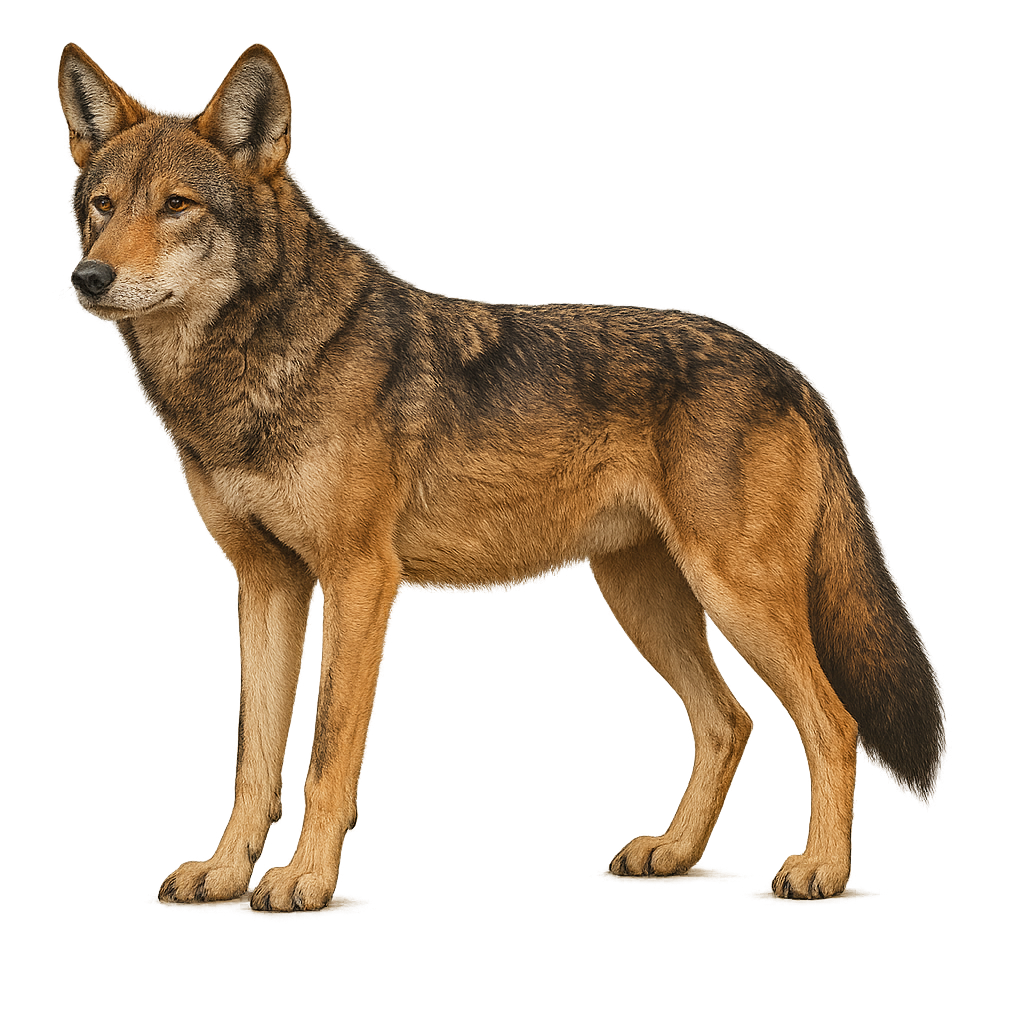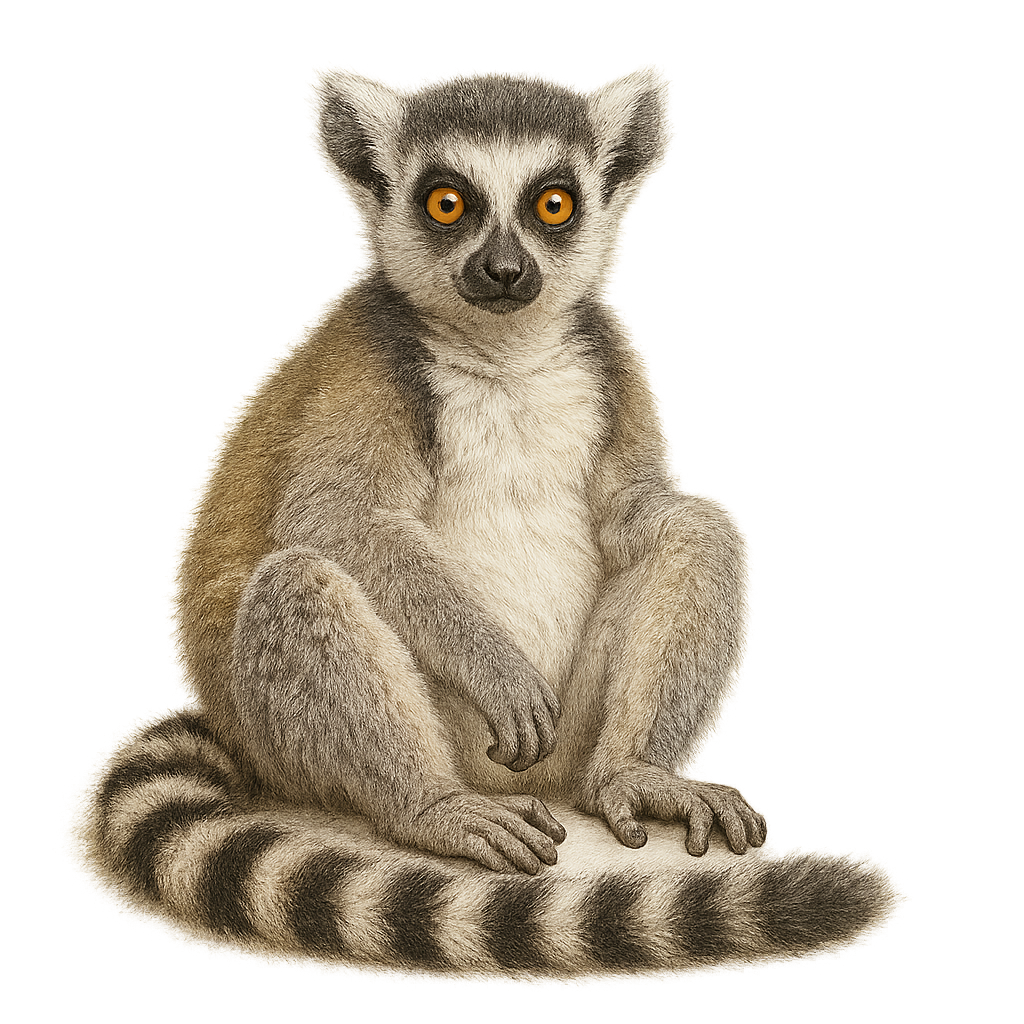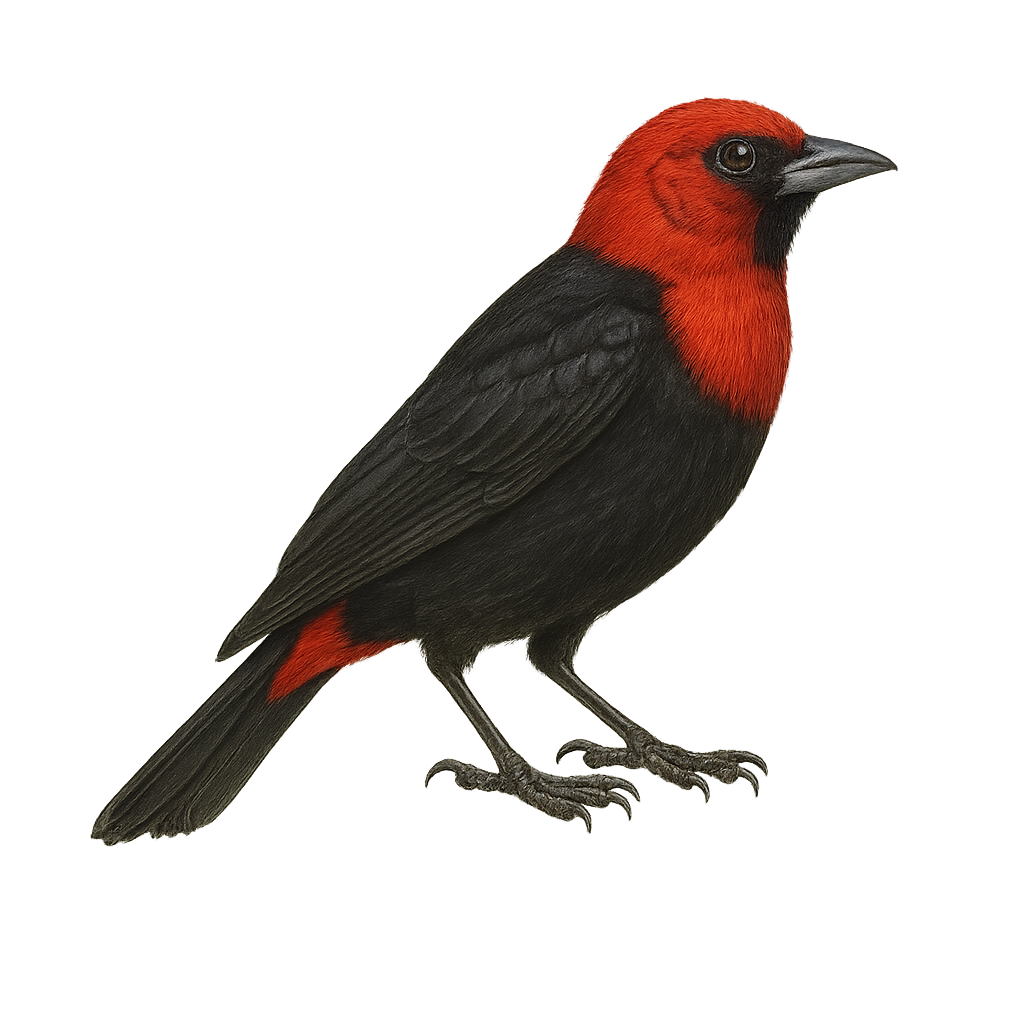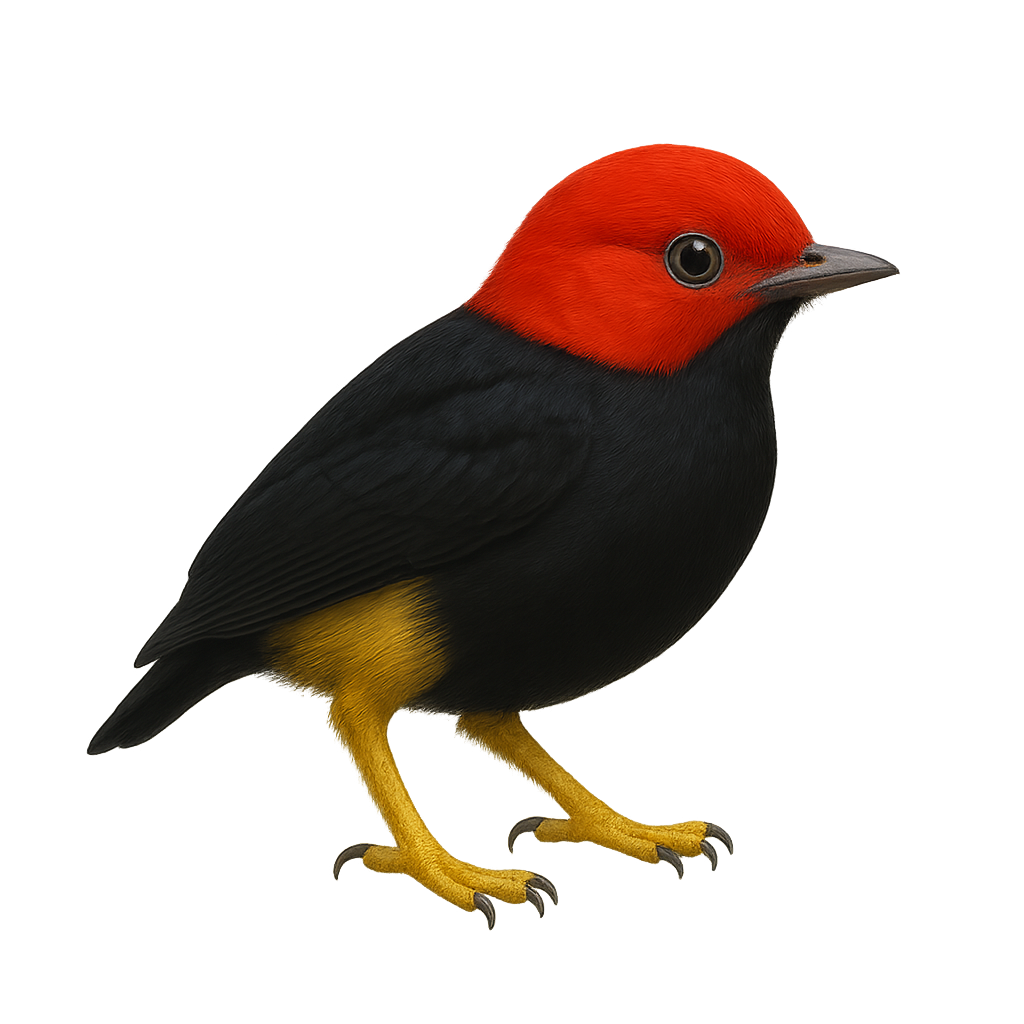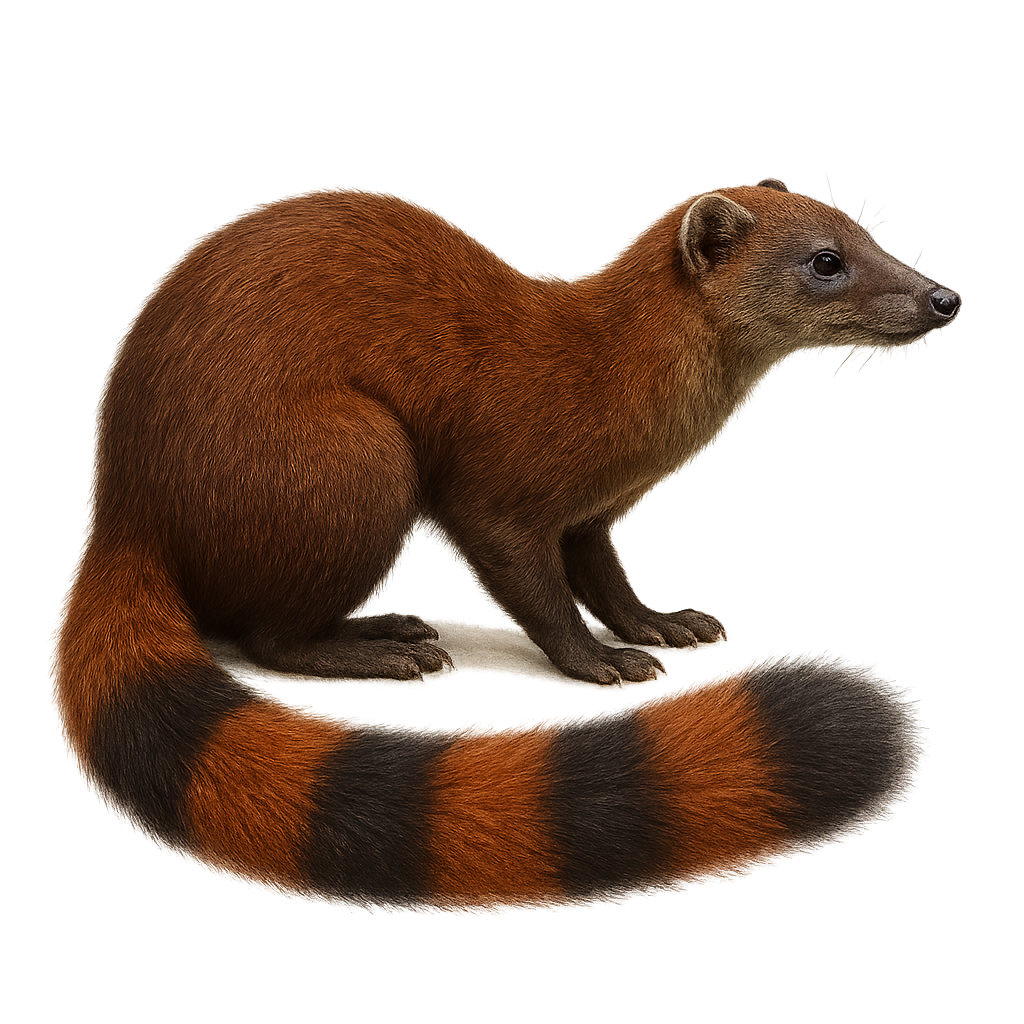The Rufous Antpitta is a secretive bird found in the humid montane forests of South America, primarily in Ecuador and Peru. It is characterized by its reddish-brown plumage and compact size, measuring about 16 cm in length. This bird is more often heard than seen, as it prefers to stay hidden in dense undergrowth. It feeds mainly on insects and other small invertebrates found by foraging on the forest floor. The Rufous Antpitta is a solitary bird, except during the breeding season. It builds its nest on the ground, hidden among fallen leaves. Although its habitat is threatened by deforestation, it is currently classified as Least Concern by the IUCN.
The Rufous-headed Antpitta is a discreet and fascinating bird inhabiting the humid forests of the Andes. This small bird, about 18 cm long, is easily recognizable by its distinct rufous head, contrasting with its olive-brown body. It prefers dense undergrowth where it primarily feeds on insects and other small invertebrates. Although difficult to observe due to its shy behavior and dense habitat, its melodious song is often heard at dawn and dusk. Conservation efforts are crucial for this species as deforestation threatens its natural habitat.
The Ringed Plover is a small coastal bird primarily found along beaches, estuaries, and sandy areas in Europe, North Africa, and Asia. It measures about 18 to 20 cm in length, with a wingspan of 40 to 45 cm, and weighs between 30 and 60 g. Its plumage is generally light beige with white underparts and an interrupted black ring around the neck and chest. This collar is more pronounced in males, while females have a less distinct collar. The Ringed Plover primarily feeds on small marine invertebrates and insects found in the sand or along the shore. It is often seen running along the waves, searching for food. While its population remains relatively stable, this species can be threatened by habitat loss, pollution, and human disturbances at its breeding sites.
The red-necked grebe is a water bird found primarily in lakes, ponds, and wetlands across Europe and Asia. It is easily recognized by its contrasting plumage, with a reddish-orange head and neck during the breeding season and more subdued plumage outside of it. This grebe primarily feeds on fish, aquatic invertebrates, and aquatic plants, which it captures by diving underwater. It is also known for its spectacular courtship displays.
The Ranitomeya cyanovittata, commonly known as the blue-banded poison dart frog, is a small, brightly colored frog native to the humid rainforests of South America. It is particularly notable for its vivid blue bands that contrast with its black body, a pattern that serves to warn predators of its toxicity. Typically measuring between 1.5 and 2 cm, this species is a fascinating example of aposematic mimicry. It primarily feeds on small insects and arthropods, which it actively hunts in the leaf litter. Its skin secretes toxic alkaloids, an effective chemical defense against predators. Although its population is stable, it is threatened by deforestation and habitat destruction.
The Silverstoneia flotator, commonly known as the rainforest rocket frog, is a small amphibian species found primarily in the humid rainforests of Central America, particularly in Costa Rica and Panama. It is distinguished by its small size, typically between 1.5 and 2 cm, and its vibrant coloration ranging from brown to green with black patterns. This frog is often observed near streams where it breeds. It is known for its high-pitched, repetitive calls used to attract mates and mark territory. Although relatively abundant in its natural habitat, habitat destruction poses a potential threat.
The Redwing, or Turdus iliacus, is a small migratory bird belonging to the Turdidae family. It is characterized by its reddish-brown plumage on the back and reddish flanks, contrasting with its white belly. Its melodious song is often heard in the forests and parks of Europe and Asia, where it feeds mainly on berries and insects. In winter, it migrates south, sometimes reaching North Africa. The Redwing is a sociable bird, often seen in flocks, especially during migration. It typically nests in trees or shrubs, building a cup-shaped nest with twigs and mud.
The Red-bearded Bee-eater, or Nyctyornis amictus, is a striking bird native to the tropical forests of Southeast Asia. Easily identifiable by its vivid red throat and bright green plumage, it measures about 25 to 30 cm in length. This bird is known for its sturdy, slightly curved beak, perfect for catching flying insects, especially bees and wasps. It prefers dense wooded habitats, where it can perch discreetly while waiting for prey. The Red-bearded Bee-eater is a solitary bird, often seen alone or in pairs. Its breeding season varies by region, but it typically nests in tree cavities or sandy banks. Although its conservation status is currently "Least Concern," deforestation poses a potential threat to its natural habitat.
The Rufous-crowned Bee-eater, or Merops americanus, is a colorful and fascinating bird known for its vibrant plumage and social behavior. It features bright feathers in shades of green, blue, and yellow, with a long, curved beak ideal for catching insects in flight. This bird is often seen in groups, nesting in colonies on sandy banks. It primarily feeds on bees and wasps, which it skillfully captures. The Rufous-crowned Bee-eater is a migratory bird, traveling long distances between its breeding grounds and wintering areas. It is appreciated for its beauty and its role in controlling insect populations.
The Rainbow Bee-eater, Merops ornatus, is a colorful and fascinating bird primarily found in Australia and New Guinea. Its slender silhouette and vibrant colors, ranging from emerald green to azure blue, make it a remarkable visual spectacle. This bird measures about 23 to 28 cm in length, with a long, tapered tail. It is known for its aerial prowess, catching insects in flight, particularly bees and wasps. The Rainbow Bee-eater is often seen in groups, nesting in burrows dug into sandy banks. Its melodious song and aerial courtship displays add to its charm. Although widely distributed, it is sensitive to disturbances in its natural habitat.
The Rosy Bee-eater, Merops malimbicus, is a graceful member of the Meropidae family, found across Central and Western Africa. It inhabits tropical forests, open savannas, clearings, and riverbanks, often seen soaring above the canopy or perched in the open. This species is easily recognized by its long triangular wings, uniform grey upperparts, rosy-pink underparts, a black eye stripe, and a sharp white moustache. Partially migratory, it sometimes forms massive breeding colonies with over 20,000 pairs. It nests in tunnels dug into sandy riverbanks or sandbars. Its call consists of harsh, brief notes like tik and trrp, typical of bee-eaters.
The Red-legged Honeycreeper, Cyanerpes cyaneus, is a small, vibrantly colored tropical bird, primarily electric blue with black wings and red legs. It is commonly found in the humid forests and wooded areas of Central and South America. This nectarivore feeds mainly on nectar but also consumes fruits and insects. Males display a striking plumage, while females are generally olive green with bluish hues. The Red-legged Honeycreeper is a social bird, often seen in small groups, and is known for its aerial acrobatics when feeding. Its breeding season varies by region but is generally active year-round in tropical areas.
The Red-throated Ant-tanager is a medium-sized bird, primarily recognized for its bright red throat in males, while females display more subdued tones. It is mainly found in the tropical and subtropical forests of Central America, favoring dense undergrowth. This bird is often seen in small groups, feeding on insects and fruits. Its song is a soft whistle, often heard at dawn. Although relatively common in its natural habitat, it remains discreet and difficult to spot due to its plumage that blends into the forest environment. Its ability to adapt to various forest habitats makes it a resilient species in the face of deforestation.
The Red-breasted Merganser is a slender diving duck, measuring about 52 to 58 cm in length with a wingspan of 67 to 82 cm. The male features a dark green head with a shaggy crest, a white collar, a rusty speckled chest, and a thin red bill. The female has a reddish-brown head with a more subdued crest, a grayish body, and a duller red bill. This duck inhabits coastal waters, estuaries, bays, and large lakes, favoring saline or brackish areas. It primarily feeds on small fish, but also consumes crustaceans, aquatic insects, and amphibians, captured using its serrated bill adapted for fishing. A migratory species, it nests on the ground near water, often concealed under vegetation or in rocky crevices. Although listed as Least Concern by the IUCN, the Red-breasted Merganser is sensitive to water pollution, coastal habitat destruction, and human disturbances.
The rhinoceros iguana is a large herbivorous lizard endemic to the Caribbean, reaching 65–136 cm including tail, with a robust body and a head adorned with bony protrusions resembling horns. It inhabits dry forests, scrublands, and rocky coastal areas of Hispaniola and surrounding islands, feeding on leaves, flowers, and fruits. Solitary and territorial, breeding occurs in the spring, when males display head bobs and body push-ups to defend territory and attract females.
The Rufous-tailed Jacamar, or Galbula tombacea, is an elegant and colorful bird primarily found in the tropical forests of South America. It is recognizable by its metallic green plumage on the back and head, contrasting with its white throat and distinctive rufous tail. This bird measures about 25 cm in length and has a long, slender beak, perfect for catching insects in flight. It is often seen perched quietly on a branch, scanning its surroundings for prey. The Rufous-tailed Jacamar is a diurnal bird, active mainly during the day. It prefers dense forest habitats but can also be found in open wooded areas and forest edges.
The Rufous-tailed Jacamar is an elegant and colorful bird, easily recognizable by its metallic green plumage and long rufous tail. It primarily inhabits the dense tropical forests of Central and South America, where it feeds mainly on insects caught in flight with its long, slender bill. This bird measures about 25 cm in length and is often seen perched quietly on low branches, from where it surveys its territory. Although discreet, its melodious song can be heard throughout the canopy. The Rufous-tailed Jacamar is a sociable bird, often seen in small groups or pairs, and it plays an important role in controlling insect populations in its natural habitat.
The Red Kangaroo is one of the most iconic and largest species of kangaroos in Australia. It is easily recognizable by its red-brown fur and large size, with adult males reaching over 2 meters in length, including their tail. The Red Kangaroo lives in the dry and semi-arid regions of the Australian Outback, where it primarily feeds on grasses and plants. This animal is an excellent jumper and uses its powerful hind legs to travel at high speeds, often performing impressive leaps. While it is mainly active at dusk and dawn, it can also adapt to the extreme temperatures of its environment.
The Rock Ptarmigan is a mountain bird adapted to the harsh conditions of high peaks. It measures about 35 to 40 cm in length and weighs between 350 and 650 g. In winter, its plumage is entirely white, allowing it to blend into the snow, while in summer, it has a brown-red plumage with dark spots to better blend into the rocks and grasses of the mountains. The Rock Ptarmigan primarily inhabits mountainous regions of Europe, Asia, and North America at high altitudes, where it feeds on plants, seeds, berries, and young shoots. Due to its thick plumage and feather-covered legs, it is well adapted to cold conditions but is also vulnerable to climate change, particularly to the loss of its mountainous habitat. The species is protected in some areas but remains sensitive to human disturbances, such as mountain tourism and temperature changes.
The Mazama americana, or red brocket, is a small deer native to South America. It is characterized by its reddish coat and modest size, standing about 70 to 80 cm at the shoulder. This deer prefers dense forests where it can hide from predators. It is mostly solitary except during the breeding season. Its diet consists of leaves, fruits, and young shoots. Although relatively discreet, it plays a crucial role in seed dispersal, aiding forest regeneration. Its population is threatened by deforestation and hunting, leading to its classification as a vulnerable species by the IUCN.
The Red-and-blue Lory, or Mesitornis variegatus, is a vibrant and fascinating bird endemic to the Talaud and Sangihe Islands in Indonesia. This parrot boasts a striking plumage, predominantly red with shades of blue on its wings and tail. Its beak is a vivid orange, contrasting with its dark, expressive eyes. Measuring about 30 cm in length, it is known for its liveliness and intelligence. The Red-and-blue Lory primarily inhabits tropical rainforests, where it feeds on nectar, fruits, and flowers. Unfortunately, this species is critically endangered, mainly due to habitat loss and illegal trade in exotic birds.
The Red Lory, or Trichoglossus borneus, is a vibrant parrot native to the Moluccas in Indonesia. This lory is known for its striking red plumage, highlighted with blue and black on its wings and tail. Measuring about 30 cm in length, it has a strong, curved beak, perfect for feeding on nectar, fruits, and flowers. Sociable and noisy, it lives in groups and frequents tropical rainforests, mangroves, and plantations. Its flight is fast and direct, often accompanied by loud calls. Although popular in the pet trade, its wild population is threatened by deforestation and trapping.
The Rainbow Lorikeet, or Lorius lory, is a colorful parrot native to the tropical forests of New Guinea and surrounding islands. This stunning bird is distinguished by its vibrant plumage, blending shades of red, blue, green, and yellow. It measures about 25 to 30 cm in length and weighs between 130 and 200 grams. The Rainbow Lorikeet is known for its curved beak and brush-tipped tongue, adapted to its diet mainly consisting of nectar and fruits. Sociable and noisy, it often lives in groups and is renowned for its aerial acrobatics. Its ability to mimic sounds also makes it a popular bird in captivity.
The Rainbow Lorikeet, or Trichoglossus moluccanus, is a vibrant and dynamic bird native to Australia and surrounding islands. It is easily recognizable by its bright plumage, which includes shades of blue, green, red, and yellow. This medium-sized parrot measures about 25 to 30 cm in length and weighs between 75 and 157 grams. Known for its curved beak and brush-tipped tongue, it primarily feeds on nectar and pollen. Sociable and noisy, it often lives in groups and is very active, swiftly moving from tree to tree. The Rainbow Lorikeet is also appreciated for its ability to mimic sounds and interact with humans.
The red wolf, Canis rufus, is a medium-sized canid native to the United States. It is characterized by its reddish-brown coat, pointed ears, and bushy tail. Historically, it occupied a wide range of habitats, from coastal marshes to deciduous forests. However, habitat loss and excessive hunting have significantly reduced its population. Today, it is primarily confined to protected areas. The red wolf is an opportunistic predator, feeding on small mammals, birds, and occasionally deer. It lives in packs structured around an alpha pair. Conservation efforts aim to reintroduce this species into its natural habitat and raise public awareness of its ecological importance.
The Rhinoceros Auklet, or Cerorhinca monocerata, is a medium-sized seabird belonging to the Alcidae family. It is recognizable by its thick, colorful beak adorned with a horn-like extension, giving it its name. This bird features dark gray plumage on its back and white on its belly, with white-ringed eyes. It primarily inhabits the coastal waters of the North Pacific, from California to Japan. The Rhinoceros Auklet is an excellent diver, capable of descending several tens of meters to capture fish and invertebrates. It nests in colonies on rocky islands, digging burrows to lay a single egg. Although its conservation status is currently of least concern, it remains vulnerable to human disturbances and climate change.
The Ring-tailed lemur is an iconic lemur from Madagascar, easily recognizable by its long, black and white ringed tail. It primarily inhabits dry forests and rocky areas in the south of the island. This social primate lives in matriarchal groups that can number up to 30 individuals. Active during the day, it spends much of its time foraging for food, mainly fruits, leaves, and flowers. The Ring-tailed lemur is also known for its morning sunbathing, sitting facing the sun to warm up. Unfortunately, this species is threatened by deforestation and hunting, leading to a decline in its wild population.
The Red-shouldered Malimbe, scientifically known as Malimbus scutatus, is a bird from the Ploceidae family, predominantly found in the humid tropical forests of West Africa. This bird is notable for its glossy black plumage and striking red shoulders, giving it an elegant appearance. It is often seen in small groups, feeding mainly on insects and fruits. Its song is melodious, consisting of whistles and trills. Although its habitat is threatened by deforestation, it remains relatively common in protected areas.
The Red-capped Manakin, Pipra mentalis, is a small, brightly colored bird found in the tropical forests of Central America. Males are particularly recognizable by their vivid red heads contrasting with their black bodies, while females have more subdued green plumage. These birds are famous for their spectacular courtship displays, where males perform complex dances to attract females. They primarily inhabit the understory of humid forests, feeding on fruits and insects. Although relatively common within their range, their habitat is threatened by deforestation. They are generally suspicious, making observation challenging.
The ring-tailed mongoose, Galidia elegans, is a small carnivore endemic to Madagascar. It is distinguished by its black and russet ringed tail, giving it a unique appearance. Its fur is primarily reddish-brown, with darker shades on the back. It measures about 32 to 38 cm in length, excluding its tail, which can reach 28 to 33 cm. Agile and lively, it is often observed in the island's humid forests and wooded areas. It primarily feeds on small animals, insects, and fruits. Although its habitat is threatened by deforestation, it is still relatively widespread in some regions.



